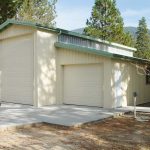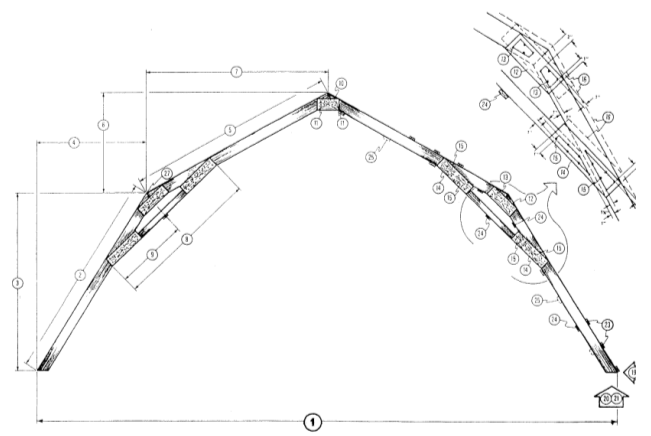Understanding How to Size Rafters
Reader ANDY in SHELBYVILLE writes:
 “I’m looking for an explanation on how to size a rafter on the side of an existing pole barn. The lean-to will be 12′ wide, 80′ long, ~10 height on the inside, pole barn post are 8′ spacing. I was planning on using 2×4 on end for the purling on top of the rafters. I am looking to understand how to size the rafters not just an answer like use 2×8 or 2×10. I’m finding it hard to find any explanations on how the purling affect the rafters sizing. I see lots of rafters spacing at 18″ and 24″ but nothing when using 8′ spacing. Thanks for any assistance.”
“I’m looking for an explanation on how to size a rafter on the side of an existing pole barn. The lean-to will be 12′ wide, 80′ long, ~10 height on the inside, pole barn post are 8′ spacing. I was planning on using 2×4 on end for the purling on top of the rafters. I am looking to understand how to size the rafters not just an answer like use 2×8 or 2×10. I’m finding it hard to find any explanations on how the purling affect the rafters sizing. I see lots of rafters spacing at 18″ and 24″ but nothing when using 8′ spacing. Thanks for any assistance.”
As you are in Shelbyville (where my oldest daughter Bailey lives and trains Tennessee Walking Horses), here is how to calculate rafters yourself.
Purlin dimensions and orientation have no affect upon rafter sizing.
First, check for adequacy in bending:
[(Plive + Pdead)] x rafter spacing in inches x rafter span (in feet) squared / (8 x Sm x Fb x Cd x Cr) must be less than or equal to one (1)Plive = live load where Code minimum is 20 psf
Pdead = roof dead load, for steel roofing, purlins, weight of rafter and a condensation barrier could be as little as 3.3 psf (we typically use 5 psf)
Sm = section modulus of board chosen and is calculated by taking board width (1.5″) x board depth (5.5″ for 2×6 or 7.25″ for 2×8) squared and divide by 8. 2×6 = 7.5625 2×8 = 13.1406 2×10 = 21.3906 2×12 = 31.6406
Fb = Fiberstress in bending (Can be looked up here: https://awc.org/wp-content/uploads/2021/10/AWC_NDS2018-Supplement_20200827_AWCWebsite_Chapter4.pdf) NOTE: Lumber values are specific to lumber species and grade, this is why they must be looked up.
Cd = Is Duration of Load, if little or no snow = 1.25, if Pg (ground snow load) is 20 or more = 1.15, in areas where snow remains on roofs for extended periods = 1.0
Cr = 1.15 if rafters are 24″ or less on center, else = 1
Second, check for deflection:
Δmax = (5 × w × l4) / (384 × E′ × I)
Where
w = pounds per linear inch of beam from snow (or live load) only 20 psf /12″ (converting feet to inches) x spacing of rafters (in inches)/12″
l – span of rafter in inches
E = modulus of elasticity (Again. can be looked up here: https://awc.org/wp-content/uploads/2021/10/AWC_NDS2018-Supplement_20200827_AWCWebsite_Chapter4.pdf)
I = width of member divided by depth of member^3 / 12 for 2×6 = 20.79; 2×8 = 47.63; 2×10 = 98.93; 2×12 = 177.97
Δallow = l / 150 IBC Table 1604.3 Footnote a
![]()
Δmax = (5 × w × l4) / (384 × E′ × I)
Δmax must be less than or equal to Δallow
And now you know why we hire engineers to perform structural calculations.
I would look to place a rafter on each side of columns, then joist hang purlins between rafters. Purlins on edge, going over top of rafters, being a questionable attachment and purlins should then have solid blocking between them at rafter to prevent rotation.








